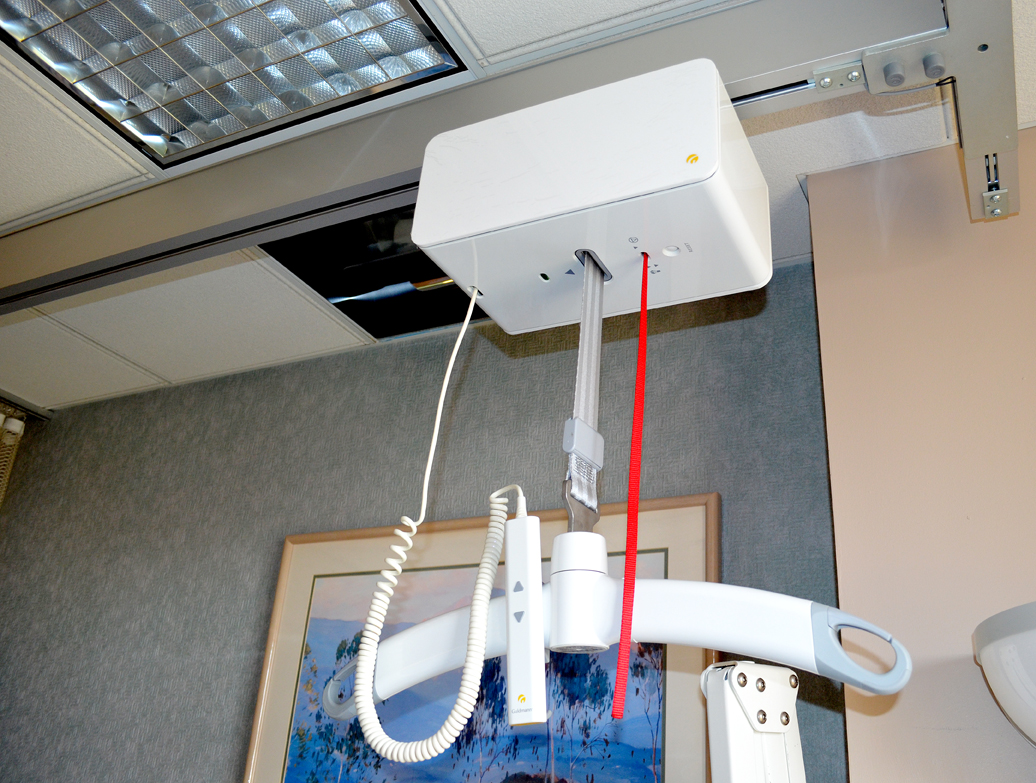Health care workers are getting older. Patients are getting heavier.
So it’s no surprise that caregiver injuries are common in Mississippi, the state with the highest obesity rate in the nation.
But one Mississippi hospital has found a way to reverse the trend by literally taking a load off its staff.
By installing ceiling lift systems in all its patient rooms, Methodist Rehabilitation Center has drastically slashed the number of employee injuries related to patient handling – the No. 1 cause of caregiver injury in the nation.
Sleekly designed and discreetly mounted, the lift system seems to fade out of sight when not in use. But its impact is clearly visible.
From 2008 to 2011, the annual number of work days lost to employee injury dropped from more than 180 to a mere eight. And the number of employees working with restrictions—those that came back to work but couldn’t work at their full job description—dropped from 797 to 115.
“We’re so happy to have it,” said Alvin Thigpen, a rehab technician at the Jackson hospital for more than 10 years. “The lift system really has changed the way we operate completely.”
Before, patient handling was performed manually, and sometimes even required multiple caregivers to manage tricky transfers. Even with help, the unique weight distribution of every individual made patient handling unpredictable.
“Just one wrong pull or awkward lift is all it takes to hurt yourself,” Thigpen said.
Using the new system, staff members simply secure a harness around the patient’s body and press a button to activate the lift. The result is a lot less opportunity for injury for both caregiver and patient.
“A major concern of patients is falling,” Thigpen said. “The lift system takes that worry away from them. It makes them feel secure.”
“It doesn’t hurt you at all,” said Taylorsville resident Edward Lowe, 78, a patient who is paralyzed from the chest down due to a spinal hemorrhage. “It’s comfortable, and they can lift me from the bed to get a bath, or put me in my wheelchair. It’s so much easier.”
As Mississippi’s premier center for the treatment of stroke, brain and spinal cord injuries, Methodist Rehab serves patients who often have paralysis, crippling muscle stiffness and other disabling conditions. And helping those patients in and out of their beds and wheelchairs was taking a toll on the hospital’s staff.
“We were seeing the numbers of patient handling injuries increasing,” said Susie Haseloff, Methodist Rehab’s employee health nurse. A hospital committee was formed in 2009 to seek solutions for the problem.
“After researching options, we started using a publication from the Veterans Administration (VA) titled Patient Care Ergonomics Resource Guide: Safe Patient Handling and Movement,” said committee chair Marcia King, Methodist Rehab’s director of education and process improvement.
“This helped us go step-by-step to look at our problem areas, determine what equipment would be most helpful for us and develop a safe-lifting policy and educate staff.”
The VA employs a similar lift system, but the committee assumed it would be too costly, as a single unit runs around $6,000.
It was Methodist Rehab’s Chief Operating Officer Joe Morette who suggested they look into the lifts, as employee and patient welfare trumped cost concerns. In the end, though, it turns out the bottom line benefits, as well.“
When you don’t have an employee at work that means someone has to fill in overtime, or you work short, or you have to bring in another staff person to work in their place,” said Haseloff. “So that adds additional costs to providing health care services.”
“In 2008, the cost of patient handling injuries for the organization was about $90,000—that is medical costs and salary expense for replacing the injured employee,” said King. “In 2011, the cost of patient handling injuries for the organization was about $21,000.”
Now, all patient rooms at Methodist Rehab’s main campus feature the ceiling lifts, including the fifth floor, which will soon reopen after renovations. Each of the hospital’s three therapy gyms –one for traumatic brain injury, one for stroke and one for spinal cord injury–also are equipped with the new lift system, as is the radiology department. Methodist Outpatient Rehabilitation Center in Flowood also uses the system.
The first Methodist Rehab facility to get the lifts installed was Methodist Specialty Care Center in Flowood, Mississippi's first residential care facility designed especially for the younger, severely disabled person. All 60 rooms have lifts, and they’ve been well received by patients and staff.
“At Specialty Care Center, residents like the lifts because they get properly positioned in their wheelchairs more quickly, and they get up more often because it takes staff less time to get them out of bed,” King said. “The first Thanksgiving after the lifts had been installed the residents were up and ready for Thanksgiving dinner in record time.”
The addition of the lifts has been overwhelmingly positive on all fronts. It’s a win for finance, for employee health, for patient satisfaction and there are even other, unforeseen benefits.
“I think it’s good for recruitment to say that we have lifts in every patient room,” Haseloff said.
“Therapists have developed ways to use the equipment to assist with therapy activities such as walking, getting up off the floor and mat exercises,” King said.
And at the end of the day the lifts just make everyone’s life a little easier. “Employee injuries used to be the main focus of my job,” Haseloff said. “Now I’m able to focus my energies in other areas.”


